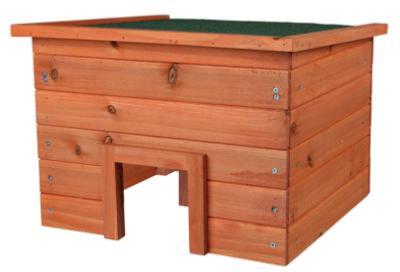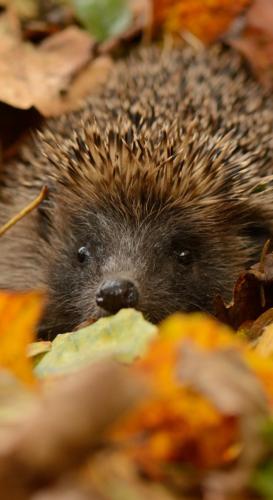Caring for Wildlife: Hedgehogs

Why Help Hedgehogs?
Hedgehogs have been around for 15 million years, their ancestors roamed the earth with mammoths and sabre toothed tigers. Just like many other species, it is humans who have pushed their numbers into decline, and are driving them towards extinction.
The biggest problem is that the habitats hedgehogs tend to prefer have been shrinking, so hedgehogs are left without the ecosystems which have supported millions of generations, and have no place to search for food or hide from predators.
Quite simply, they need our help to survive, both as individuals and as a species.

Supplementary Feeding
The natural diet of hedgehogs consists of slugs, ground beetles, caterpillars and worms. When the gound is particularly dry, or the weather is very cold, the insects are much harder for hedgehogs to find.
A combination of meat-based cat food and high quality dried Hedgehog Food is ideal for feeding adult fedgehogs.
Bread is very low in energy so can be dangerous for hedgehogs as they will feel full but not have the energy or nutrients to support their next hunting trip.
Hedgehogs love mealworms, and a few mealworms mixed in with their food provides a lovely treat, but they don't offer a lot of nutrition so don't feed too many.
Feeding from a shallow bowl allows the hedgehogs to access their food easily, and provides for easy cleaning between foods to prevent disease and parasite spread.

Hydration
When the ground is dry and puddles have dried up, hedgehogs often have difficulty staying hydrated as they can't climb or jump to alternative water sources.
A shallow bowl of water can save lives on hot days.
Please do not feed milk - as much as they seem to enjoy it, milk causes diarrhoea and this can be fatal to hedgehogs.

Feeding Stations & Housing
Hedgehog homes prevent predators from attacking hedgehogs when they're feeding, and keep the food safe from cats and foxes until the hedgehogs are ready to eat.
An ideal Hedgehog feeding station will have a hedgehog sized door, a labyrinth inside to protect the hedgehogs, and some soft bedding such as hay or dried leaves for resting on.
Leaving some areas of wilderness in your garden will also allow hedgehogs to hide and feed naturally, they love to snuffle through piles of leaves and hedges for insects.

Keeping Garden Hedgehogs Safe
Keep Barbed Wire at lease 30cm above the ground, and never leave it trailing on the ground. Sadly when hedgehogs become impaled on barbed wire spikes, they often curl into a ball and the wire becomes enmeshed into their soft underbellies.
Always check Bonfires and Compost Heaps carefully before setting them alight or turning the contents with pitchforks. Wildlife rescues regularly see hedgehogs suffering from extensive burns, life threatening smoke inhalation and injured by pitchforks.
Uncovered drains are easy for hedgehogs to fall into, especially the small waste traps often found outside kitchens, as they try to access water within the drains.
Hedgehogs sometimes snuggle into tall grass and can have devastating injuries from lawnmower blades and strimmers. Walk the area you intend to cut to search for nests and sleeping wildlife before you begin.
Never use slug pellets, as hedgehogs and birds often eat poisoned slugs which leads to horrendous deaths from secondary poisoning. Search for alternative methods which aren't as cruel to wildlife (and that includes slugs and snails).